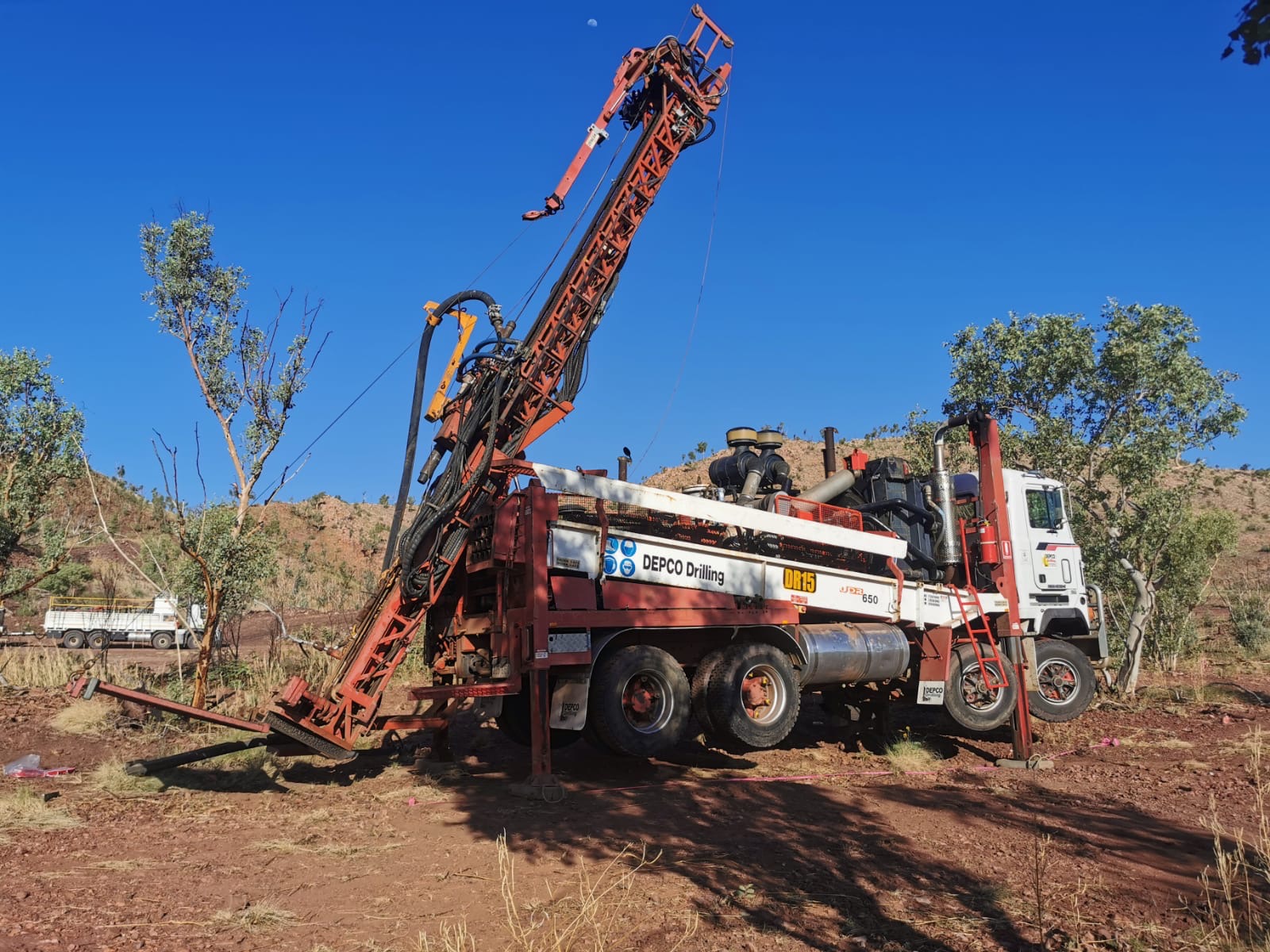- Preliminary interpretations from CCZ’s geophysicist consultant, post completing the inaugural induced polarisation (IP) survey at the Big One Deposit, has delivered outstanding results:
- There is compelling evidence significant incremental mineralisation is located along fault structures rather than constrained within the trachyte dyke; and
- Consequently, this increases the potential structural targets across the Big One Deposit
FIGURE 1: LINE 3 – NEWLY IDENTIFIED BEDROCK CONDUCTORS
- Findings from Line 3 – which is 700m long (Figure 1) – highlight a significant untested bedrock conductor north of the line of lode that is materially larger than the high-grade anomaly drilled in 2020
- Further, three more untested prospective anomalies along Line 3 were discovered south of the line of lode which collectively bolster the Big One Deposit’s exploration potential
- Reconciling the IP survey results with all legacy drilling, which boosted the geology team’s understanding of the system apparent at the Big One Deposit, highlighted the following:
- Several drill-holes need to be extended to deeper depths to enhance the probability of intersecting underlying copper mineralisation; and
- New locations and orientations are being made to the next phase of the drilling campaign – which is due to commence shortly – in order to achieve optimal results
Castillo Copper’s Managing Director Simon Paull commented: “Overall, the geophysics campaign has successfully identified a possible extension to known mineralisation beyond the line of lode at the high-grade Big One Deposit. More importantly, however, it has delivered several new high priority structural targets for the next phase of drill-testing that enhance the overall exploration potential.”
Castillo Copper Limited (“CCZ”) is delighted to announce that preliminary interpretations by the geophysicist consultant reviewing the inaugural IP survey results at the Big One Deposit (Appendix A)
revealed the following:
- Compelling evidence that highlights significant incremental mineralisation is located within fault structures that are outside the trachyte dyke. This is an important finding that has the potential to significantly extend known mineralisation as initially it was believed to be constrained within the
trachyte dyke.
GEOPHYSICS CAMPAIGN
The recent IP survey comprised six lines, ranging from 500-700m long, and spaced nominally 200m apart over the 1,200m line of lode which has been subject to three drilling campaigns over the past five decades (1) (Figure 2).
The primary objective of the campaign was to identify massive new sulphide bedrock conductors along the strike extent and extend known mineralisation. Further, the geology team wanted geophysical insights into several known yet under-explored nearby anomalies that included previously mapped gossanous outcrops (1) to the north-east of the 2020 drilling campaign and scattered historical surface stream sediment and rock chip sampling.
FIGURE 2: LINE LOCATIONS TRANSVERSING BIG ONE DEPOSIT
Encouraging results
In reviewing the results from the IP survey, Line 3 delivered the most compelling new insights, summarised as follows:
- A significant, untested bedrock conductor was identified circa 200m north of the line of lode where last year’s high-grade discovery was located (refer Figure 1). Notably, the newly discovered target is materially larger than the anomaly intersected in 2020 which produced the following nearby intercepts (between Lines 2 and 3):
303RC: 40m @ 1.64% from (fm) surface incl: 11m @ 4.40% fm 24m, 5m @ 7.34% fm 28m & 1m @16.65% fm 29m1
301RC: 44m @ 1.19% Cu fm surface incl: 14m @ 3.55% fm 27m, 3m @ 10.88% fm 37m & 1m @12.6% fm 37m1
- In addition, south of the line of lode along Line 3, are three more untested anomalies that build on the Big One Deposit’s exploration potential.
One of the key value-add insights was reconciling the geophysics findings with all legacy drilling results,as this enhanced the geology team’s understanding of the underlying system. Moreover, it aided identifying the following issues:
- It is apparent the mineralisation is dictated by emplacement along structures and not the dyke, as there appears to be significant chargeability anomalies away from the trachyte dyke, following lineaments or structural trends.
- Initial observations are that historical drilling in the southern region has not tested areas of elevated chargeability (either too shallow or wrong location).
- Not all chargeable anomalies will reflect mineralisation – typically clays, uneconomic sulphides and some lithologies such as shales can give chargeable responses – but certainly the results from Lines 2 and 3 give some confidence that zones of elevated chargeability in this region are of interest as drill tested anomalies have shown significant copper mineralisation.
- The next phase of the drilling campaign, which is due to commence shortly, is being realigned to intersect newly identified targets and bolster the chances of achieving optimal results.
Next steps
There are several concurrent next steps CCZ’s teams are working on:
- The geophysicist consultant will prepare a 3D model of the IP survey findings from the Big One Deposit.
- The upcoming drilling campaign will soon be finalised ahead of the team moving to site to commence work.
References
- CCZ ASX Release – 11 January 2021



